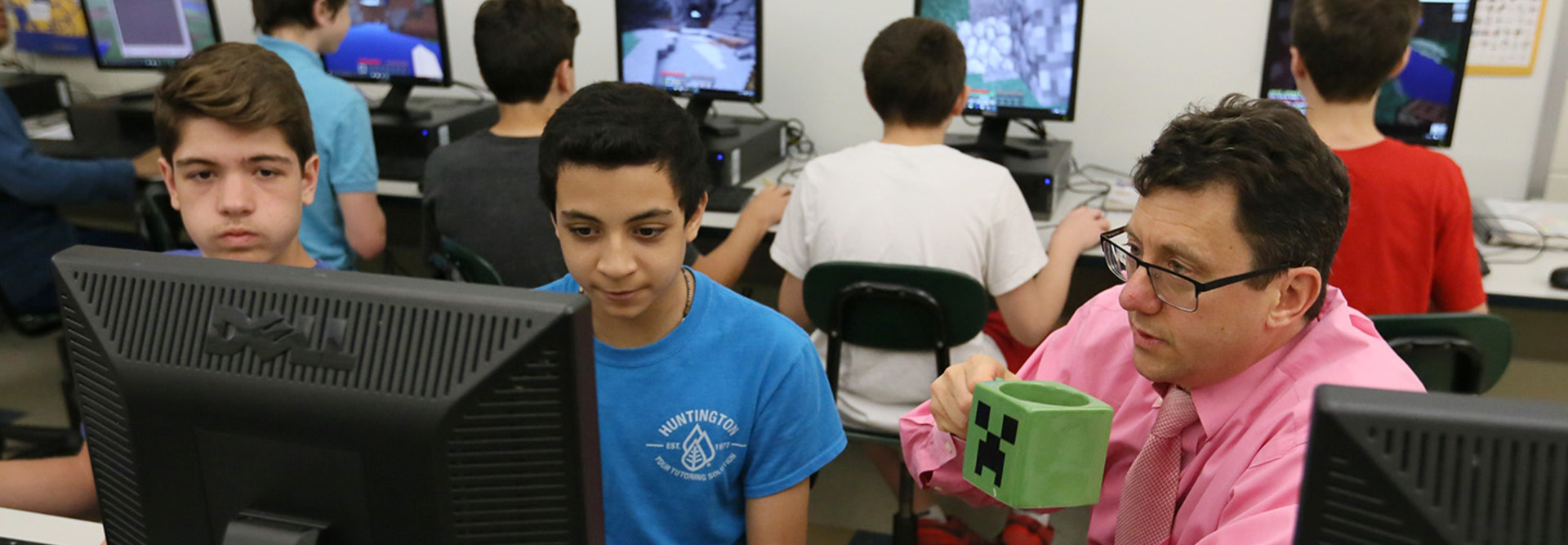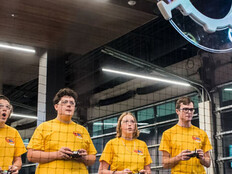Educators Shape Minecraft’s Growing Presence in the Classroom
Imagine learning about ancient Egypt and then being able to construct your own pyramid that is accurately scaled. Or, imagine reading Charlotte’s Web and recreating the barnyard to explore on your own.
This is the reality for the 75,000 educators and students around the world who are using Minecraft: Education Edition in their classrooms. These educators aren’t just playing around in the many worlds of Minecraft, but rather are shaping the classroom edition itself.
“We’ve been working really closely with educators who are already using Minecraft in their classroom, educators who are using other games, and educators who haven’t used games at all,” says Deirdre Quarnstrom, Microsoft’s director of Minecraft Education. “They help us understand some of the challenges in bringing a game into the classroom.”
Quarnstrom says this is where features like classroom mode were introduced. Classroom mode allows teachers to see where all students are in the game and gives them the power to bring them all to one location.
Thanks to new teacher-approved features, adding Minecraft to your class has gotten even easier.
Educator-Shaped Updates and Lessons Expand Utility, Creativity
Earlier this year, Microsoft announced some new Minecraft: Education Edition features: Global Pause, a way to take a quick break or transition to another activity; text-to-speech options for in-game chat to boost accessibility; and a new user interface that makes it easier for teachers and students to manage settings.
In January, Microsoft also expanded its Minecraft Mentor team — a group the company works with regularly to improve the game — to 60 educators in 18 different countries.
These mentors offer advice on their favorite activities and are important thought leaders in the Minecraft community.
Since the launch of the education edition in November 2016, Quarnstrom says teachers have been overwhelmingly supportive of one another and more than 100 lesson plan starters have been submitted— some from Minecraft Mentors.
“Minecraft is a game used in education, not an educational game,” says Quarnstrom. “All of the objectives and quests come from educators.”
The pages of lesson plans available on the Minecraft: Education Edition website range from age 3 to over 18 and cover a wide range of topics.
One innovative Language Arts lesson has students creating a kingdom of words where students create buildings that reflect the parts of speech.
“All buildings and places should be designed to reflect the parts of speech they represent,” writes lesson creator Jon Greenberg. “The size and shape of each part of speech should announce their role in crafting a sentence.”
Quarnstrom said she’s continually blown away by how educators have their students use Minecraft for storytelling and sees it as a celebration of the versatility of the tool.
“We’ve intentionally kept it really open and have seen broad implications across K–12,” says Quarnstrom. “We’re really looking forward to seeing how school and teachers continue to utilize it.”









